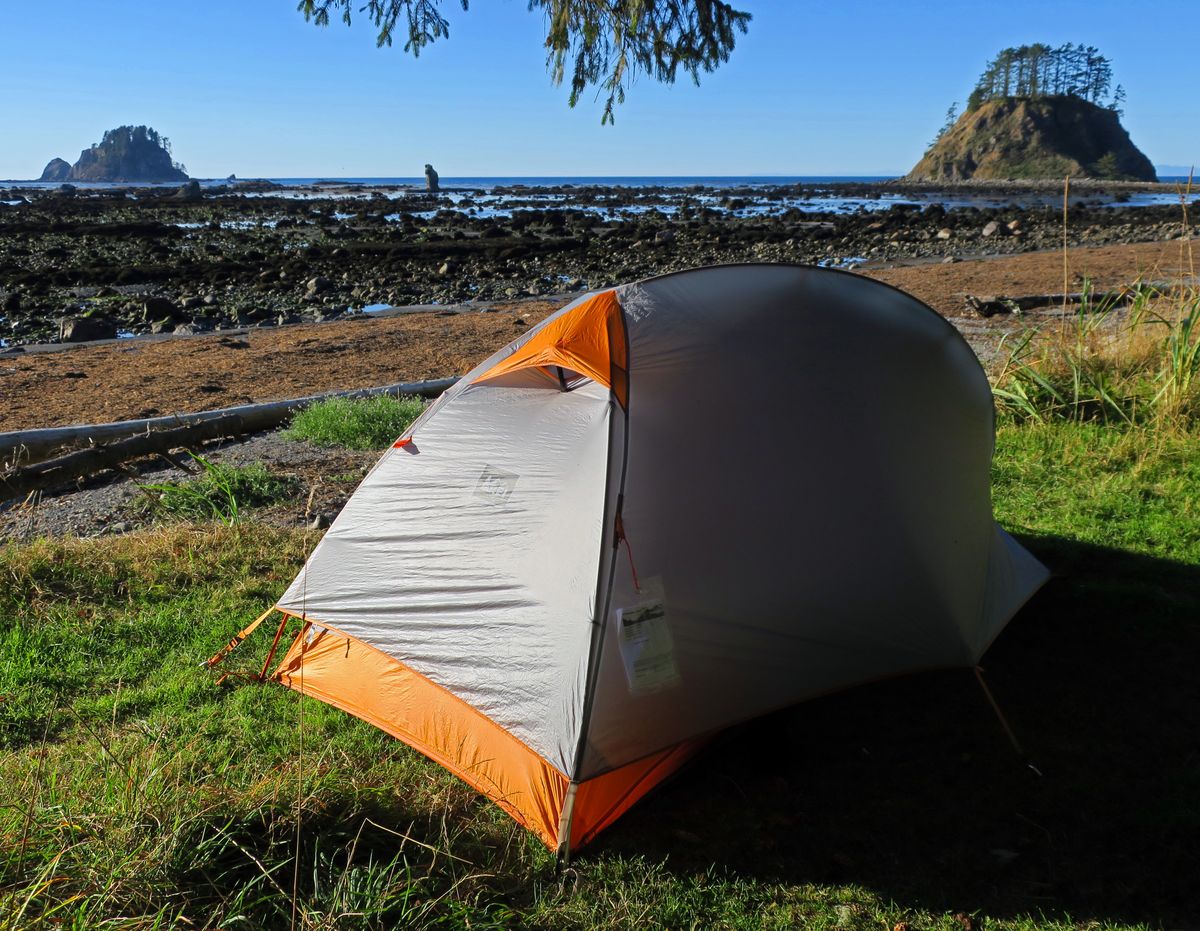Secluded and spectacular: Backpacking the Olympic Peninsula

Secluded, wild, spectacular.
The wilderness beaches of Washington’s Olympic Peninsula are all of these things, which is particularly appealing now as we watch other states close their overcrowded stretches of sand during the COVID-19 pandemic.
You won’t run into many people on the Olympic Coast. Put it this way: During one 24-hour stretch of a recent backpacking trip, I saw three other people.
Talk about social distancing.
Of course, a backpacking trip to the coast is no ordinary walk on the beach – you’ll boulder-hop, climb headlands and navigate seaweed-covered tide pools.
Besides physical challenges, the Olympic Peninsula coast often has weather challenges. Chances are you’ll face wind and rain when you explore this rugged landscape, another price you pay for all that beauty and seclusion.
Is it worth it? Totally.
Ozette Loop
The wilderness coastline in Olympic National Park stretches 73 miles from the northern tip of the peninsula. By far the most popular coastal hike is the 9.2-mile Ozette Loop, a triangle-shaped route starting and ending at Lake Ozette, about 29 miles to the west of Seiku, a fishing town on the Strait of Juan de Fuca.
Like a triangle, the loop trail has three distinct sides: From Ozette, you can either travel through the coastal rainforest on a relatively flat trail southwest to Sand Point, or northwest to Cape Alava, each destination offering wilderness camping.
The coastal side of the triangle connects these two destinations on a rugged shore that at low tide becomes a series of rocky features and tide pools. The hike is a perfect entry into camping on the coast, easy enough to do as an overnighter with plenty of time for side trips.
Many people also do the Ozette Loop as a day hike, pounding out the 9.2 miles in one shot.
Cape Alava sits on a rocky section of coastline with a nice gravel beach and campsites throughout the nearby forest. Sand Point also has many forested campsites and a broad, driftwood-strewn beach.
I was hooked the first time I visited Sand Point as a junior high school student many years ago. On that backpacking trip, I camped in a driftwood fort my friends and I built.
Over the years, I’ve been back again and again. I’ve camped on the Ozette River north of Cape Alava, and hiked the beautiful Shi Shi Beach and Point of the Arches area south of Neah Bay several times.
For me, this coast never gets old.
Pandemic impacts
Olympic National Park is open after the COVID-19 closures earlier this year.
Two popular areas of the coast remain off-limits because of native tribal closures.
Second Beach, a beautiful day-hiking destination near the town of La Push, “will remain closed until the Quileute Reservation opens,” said Penny Wagner, spokeswoman for Olympic National Park.
And the beautiful beaches north of Cape Alava – notably Shi Shi Beach and Point of the Arches – remain closed by the Makah Indians, Wagner said.
Based on what I saw during my most recent backpacking trip, visitation numbers are down everywhere along the Olympic Peninsula coast. I camped at a gorgeous spot called Wedding Rocks on the Ozette Loop and was completely alone.
From there, I hiked 11 miles south to a camp known as the Norwegian Memorial at Kayostla Beach, where I saw one other group.
On my third night, I stayed at a place called Yellow Banks, not another human in sight.
Wild appeal
The appeal of the wild Olympic Peninsula coast is that you get to see what the West Coast looked like before there were any resorts or roads. No telephone wires, no condos, no salt water taffy or T-shirt shops.
In their place, you’ll see only rock, sand and water, punctuated by seaweed, house-sized old-growth logs and massive piles of driftwood.
Instead of people, you’ll see eagles, deer, raccoons and tide pool crabs, all staring back at you like Travis Bickle, as if to say, “You talkin’ to me?” Why yes – hello there!
Despite all of the visits I’ve made to this coastline, I sometimes forget how difficult it can be.
I scheduled an 11-miler on my second day, thinking, “Hey, it’s a beach hike. Piece of cake.”
The final 5 miles just north of Kayostla Beach nearly killed me.
When I wasn’t negotiating slippery seaweed, I was trudging through ankle-deep gravel that made me feel like I was wearing concrete-covered hiking boots.
And then I came to a long stretch of boulders, hopping from one to the next in a torturous Zen-like meditation that forced my eyes downward, my mind endlessly repeating, “Step, balance yourself, step, balance yourself, step …”
Ah, but the rewards.
This time, the weather cooperated and I even had two sunny days in a row, an occurrence that feels as rare as the Mariners making the playoffs.
As I arrived at Kayostla Beach, I dropped my pack, took off my boots and stuck my aching feet in the sand, the sun washing over me as I looked at my wild surroundings.
It was like no place else on Earth.